How to Write a Winning Research Proposal: A Step-by-Step Guide
Writing a research proposal might seem hard, but it’s really just a way to show what you plan to study. This guide will help you write a strong research proposal step by step. By the end, you will know how to pick a good topic, write a clear title, and explain your research plan.
Key Takeaways
- A research proposal is like a plan that shows what you want to study and why.
- Choosing a topic that interests you and fills a gap in current research is important.
- A good title should be clear and tell what your research is about.
- The abstract is a short summary that gives an overview of your proposal.
- Explaining your research methods and timeline helps show that your project is doable.
Understanding the Purpose of a Research Proposal
A research proposal is a structured document that outlines your study’s topic and explains how you plan to investigate a specific question. It provides an in-depth analysis of the theories supporting your hypothesis and details the methodologies you plan to use. A well-crafted research proposal is essential for securing funding and gaining approval from academic committees.
Choosing a Compelling Research Topic
Identifying Research Gaps
To choose a compelling research topic, start by identifying gaps in existing research. Look for areas that haven’t been explored much or where there are unanswered questions. This will help you find a unique angle for your study.
Aligning with Academic Interests
Your research topic should align with your academic interests. Pick a subject you are passionate about. This will keep you motivated throughout the research process. Make sure the topic is also relevant to your field of study.
Ensuring Feasibility
It’s important to ensure that your research topic is feasible. Consider the resources you have, such as time, money, and access to data. Make sure you can realistically complete the research within these constraints.
A well-chosen research topic not only fills a gap in existing knowledge but also aligns with your interests and is feasible to complete.
Crafting a Clear and Concise Title
Characteristics of a Good Title
A good title is clear, concise, and informative. It should give readers a quick idea of what your research is about. Aim for a title that is specific and reflects the main focus of your study. Avoid using jargon or overly complex words that might confuse readers.
Avoiding Common Pitfalls
When crafting your title, steer clear of vague terms and unnecessary words. Avoid using abbreviations or acronyms that are not widely known. Ensure your title is not too long; a lengthy title can be overwhelming and may lose the reader’s interest.
Examples of Effective Titles
Here are some examples of effective research titles:
- "The Impact of Climate Change on Coastal Erosion"
- "Exploring the Relationship Between Sleep and Academic Performance in College Students"
- "Assessing the Effectiveness of Online Learning Tools in High School Education"
A well-crafted title sets the stage for your research proposal and can make a significant difference in capturing the attention of reviewers.
Writing an Engaging Abstract
Key Elements of an Abstract
An abstract in a research proposal summarizes the main aspects of the assignment in a given sequence in 300 words or less. It should include the following key elements:
- Aims: Clearly state the purpose of your research project and your primary objectives.
- Methods: Describe the procedures you used to select research subjects, gather data, and address your initial inquiry.
- Hypotheses: Briefly outline the new information or conclusions you expect to discover.
- Projected Effects: Explain how the results of your research can contribute to the academic field or benefit a specific group.
Tips for Brevity and Clarity
- Be concise: Use clear and straightforward language to ensure your abstract is easy to understand.
- Avoid jargon: Stick to simple terms that can be understood by a broad audience.
- Focus on key points: Highlight the most important aspects of your research without going into too much detail.
- Revise and edit: Review your abstract multiple times to eliminate any unnecessary words or phrases.
Common Mistakes to Avoid
- Being too vague: Ensure your abstract provides a clear and specific overview of your research.
- Including too much detail: Stick to the main points and avoid overloading your abstract with information.
- Using complex language: Keep your language simple and accessible to avoid confusing your readers.
- Neglecting the structure: Follow a logical sequence to make your abstract easy to follow.
A well-crafted abstract is essential for capturing the interest of your readers and providing a clear snapshot of your research proposal.
Developing a Strong Introduction

Setting the Context
To start, you need to set the context for your research. This means giving some background information about your topic. Explain why this topic is important and what we already know about it. This helps the reader understand why your research matters.
Stating the Research Problem
Next, clearly state the research problem. What issue or gap in knowledge are you trying to address? This is a crucial part of your introduction because it tells the reader what your research aims to solve.
Outlining Objectives
Finally, outline the objectives of your research. What do you hope to achieve? List your main goals and the questions you plan to answer. This gives the reader a clear idea of what to expect from your study.
A well-written introduction can make the reader excited about your project and its potential results.
Conducting a Thorough Literature Review
Summarizing Relevant Studies
A literature review shows you understand the existing research on your topic. Summarize key findings from previous studies that relate to your research. This helps set the stage for your own work.
Identifying Gaps in Existing Research
Point out areas where more research is needed. By identifying these gaps, you can show how your study will add new insights. This is crucial for justifying your research.
Justifying Your Study
Explain how your research will contribute to the field. This could be by filling a gap, challenging existing theories, or providing new data. Make it clear why your study is important.
Detailing Your Research Methodology
Choosing the Right Research Design
Selecting the appropriate research design is crucial for the success of your study. Your design should align with your research objectives and the nature of your research question. Common research designs include qualitative, quantitative, and mixed-methods approaches. Each has its strengths and weaknesses, so choose the one that best fits your study.
Data Collection Methods
Data collection is a vital part of your research. You need to decide how you will gather the data you need. Common methods include surveys, interviews, and experiments. Make sure to justify why you chose these methods and how they will help you answer your research question.
Addressing Ethical Considerations
Ethical considerations are essential in any research involving human subjects. You must ensure that your study complies with ethical standards. This includes obtaining informed consent, ensuring participant privacy, and adhering to data protection regulations.
Ethical standards are not just guidelines; they are essential to conducting responsible research.
By carefully planning your research methodology, you can ensure that your study is well-structured and capable of addressing your research question effectively.
Creating a Realistic Research Timeline
A well-structured timeline is crucial for the success of your research project. It helps you stay on track and demonstrates to reviewers that you have a clear plan. Breaking down the research process into manageable tasks ensures that each phase is given adequate attention and resources.
Budgeting for Your Research

Creating a budget for your research is crucial to ensure you have the necessary resources to complete your project. A well-planned budget can make or break your research proposal. Here are the key components to consider:
Estimating Costs
Start by listing all the potential expenses. These might include:
- Travel expenses: Costs for commuting to specific locations for interviews or data collection.
- Research materials: Tools or software needed for data collection and analysis.
- Research personnel: Hiring assistants for tasks like organizing data or transcribing interviews.
Justifying Budget Items
For each item in your budget, provide a clear justification. Explain why each expense is necessary and how it will contribute to achieving your research goals. This helps reviewers understand the importance of each cost.
Seeking Funding Opportunities
Look for funding sources that align with your research topic. This could include academic grants, private foundations, or government programs. Securing funding is often a competitive process, so tailor your proposal to meet the specific requirements of each funding source.
A detailed and justified budget not only helps in securing funding but also ensures that your research project runs smoothly without financial hiccups.
Highlighting Expected Outcomes and Significance

Potential Contributions to the Field
Your research should aim to advance academic knowledge. This means it should fill in gaps or add new insights to your field. Think about how your findings can help other researchers or open up new areas of study.
Practical Applications
Consider how your research can be used in real-world settings. For example, can it solve a problem or improve a process? Practical applications make your research more valuable to a wider audience.
Implications for Future Research
Your study should also pave the way for future research. Highlight how your work can lead to new questions or further studies. This shows that your research has long-term value and can inspire others to continue exploring the topic.
When you clearly outline the expected outcomes and significance of your research, you make it easier for reviewers to understand its value and potential impact.
Compiling References and Appendices

Using Consistent Citation Styles
When compiling your references, it’s crucial to adhere to a consistent citation style throughout your document. Common styles include APA, MLA, and Chicago. This not only gives credit to the original authors but also strengthens the credibility of your proposal. Make sure to follow the specific guidelines provided by your institution or funding body.
Including Supplementary Materials
Appendices are where you include additional supporting materials that are relevant to your research proposal. These can be:
- Survey questionnaires
- Interview guides
- Detailed data analysis plans
- Any other supplementary information that supports the main text
Including these materials provides further depth to your proposal, showcasing the thoroughness of your preparation.
Ensuring Completeness and Accuracy
Double-check all references and appendices to ensure they are complete and accurate. This includes verifying that all cited works are listed in the reference section and that all supplementary materials are included in the appendices. Accuracy in this section reflects your attention to detail and commitment to high academic standards.
A well-organized reference and appendix section can significantly enhance the overall quality of your research proposal.
Conclusion
Writing a winning research proposal may seem challenging, but with careful planning and a clear understanding of each component, it becomes manageable. Remember to start with a strong title and abstract, provide a detailed introduction, and conduct a thorough literature review. Clearly outline your methodology, timeline, and budget if needed. By following these steps, you can create a proposal that effectively communicates your research ideas and objectives. Keep your language simple and your focus sharp. With dedication and attention to detail, your research proposal can pave the way for a successful project.
Frequently Asked Questions
What is a research proposal?
A research proposal is a detailed plan for a study on a specific topic. It outlines the problem, the methods for conducting the research, and the importance of the study.
Why is a research proposal important?
A research proposal is crucial because it helps secure funding, gain approval from academic committees, and provides a clear plan for the research project.
How do I choose a good research topic?
Pick a topic that fills a gap in existing research, matches your interests, and is practical to study within the time and resources you have.
What makes a good research title?
A good research title is clear, concise, and reflects the main question or focus of your study. It should grab the reader’s attention and be easy to understand.
What should be included in an abstract?
An abstract should include the research problem, objectives, methods, and potential outcomes. It should be brief and give a quick overview of the proposal.
How should I structure the introduction of my research proposal?
Start with background information, state the research problem, and outline the objectives. Make sure to set the context and explain why the study is important.
What is a literature review?
A literature review summarizes existing research on your topic. It identifies gaps in the current knowledge and shows how your study will contribute to the field.
Why is a research timeline important?
A research timeline breaks down the project into phases, sets milestones, and helps manage time effectively. It ensures the research stays on track and is completed on time.




